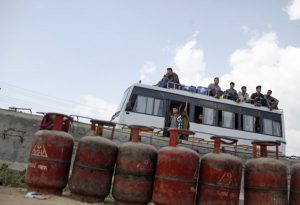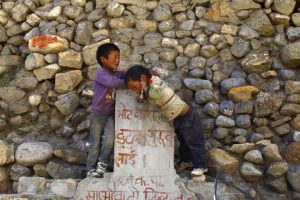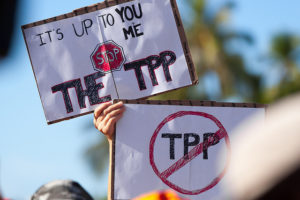Violent conflicts at the Chinese-owned Las Bambas copper mine Peru, which claimed the lives of four people last month, can be avoided in future if companies make more effort to understand investment environments and engage with local communities, experts have told Diálogo Chino. Located near the town of Chalhuahuacho in the Apurimac region, Las Bambas is one of the largest copper mining projects in the world. But its development has been met with resistance by the local community following five modifications to the environmental impact assessment (EIA). Last week, Peruvian NGO CooperAcción recommended that the Peruvian government revise the EIA for Las Bambas as “it no longer represents the realities” of the situation there. Community leaders agreed to end the protest at the mine earlier this month following a round-table dialogue with representatives from the local and national governments. But lessons need to be learned, says CooperAcción, which has urged the government to ensure greater input from local communities in decisions made with Chinese investors, many of which are state-owned and secure deals through direct negotiations with host governments. “It’s the best way to avoid confrontations in the future,” says economist Julia Cuadros, one of the founders of CooperAccion, which has been monitoring the social and environmental impacts of the Peruvian mining industry since 1977. Beijing-based lawyer Edwin Lee, of the firm Dacheng, who specializes in China’s overseas investments, says Las Bambas’ Chinese owner MMG should, for their part, have “done their homework” on past conflicts in Peru’s mining sector. Lee adds that MMG inherited many existing problems at Las Bambas from the previous owners, the Swiss Glencore-Xstrata. Pipeline According to Cuadros, copper from Las Bambas was originally supposed to be transported to the nearby Tintaya mine for processing via a pipeline. From Tintaya, the metal would then travel to the port of Arequipa. But Tintaya, which was also owned by Glencore and which has now been deactivated, was left out of the Las Bambas deal, meaning copper now has to be processed on site. By eliminating the pipeline, MMG has vastly increased the fleet of trucks transporting the processed ore from Las Bambas to port. “There are 225 trucks leaving full and coming back empty every day,” said Cuadros, adding that explorations into the mineral deposits at Las Bambas will also increase, causing a greater volume of waste at the site. “No one has made a serious evaluation of the consequences of these changes and what impact they will have on the environment and the local population,” Cuadros said. “The local population was outraged because they only heard about the decisions after they were made,” she claims, adding that this has led to fears that the environmental impacts will be greater than first thought. More mining, more conflict Mining was responsible for 5% of Peru’s gross domestic product (GDP) and more than half of its exports in 2013. With nearly 200 mines in operation, the country is among the leading international producers of silver, gold, lead, zinc, and copper. Of the 25 current projects open to foreign investment, at least 15 have been called into question by the local communities. According to statistics from the Peruvian government, social conflicts relating to mining have tripled since 2008. La Bambas had experienced comparatively little conflict, until recently. “The local communities have always been favorable to mining,” says Manuel Glave of the Group for the Analysis of Development (GRADE). “There was an arrangement with the companies to compensate the residents of the region, economically as well as with social projects,” he said, adding that the current situation has been complicated by the mine’s multiple owners and a lack of communication with MMG. “The problems did not arise because China took over the project,” said Lee, according to whom Chinese companies now face a “great challenge” in learning to deal with countries in which public pressure can have a big influence on their ventures. “In Africa, which lacks more democratic regimes and legislation, they encounter less resistance on the part of the population,” says Lee, adding that compliance with the law and adapting to the rules in new markets in Latin America is “very important”. In its report, CooperAcción also accuses the Peruvian authorities of the maltreatment of protesters in using the private company facility to interrogate those detained. “This is a practice from the times of the dictatorship, which only adds to the population’s distrust of the corporations,” Cuadros said.





